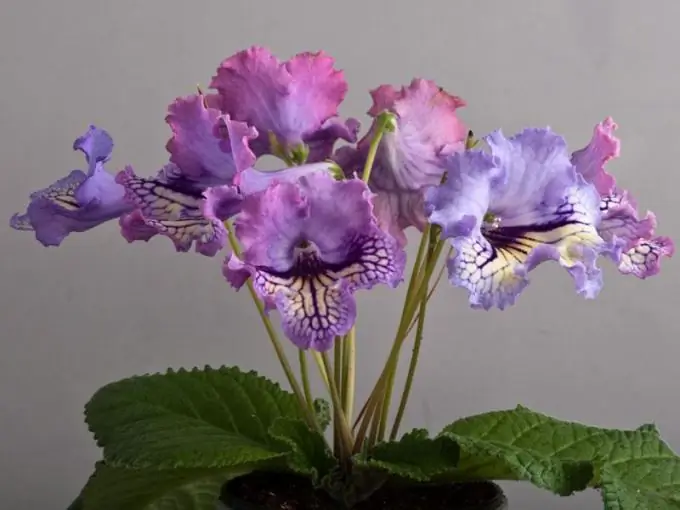Streptocarpus successfully competes with the violet in its beauty and charm. Even one specimen will not go unnoticed among other flowers of the Gesnerievye family. Streptocarpus are distinguished by powerful foliage, bright flowers of various shapes and color of petals for every taste.

Streptocarpus got its name because of the unusual shape of the seed capsule - in the form of a twisted pod. The genus has more than a hundred natural species. The ancestors of modern domestic varieties grow on mountain slopes and in coastal subtropical forests.
Streptocarpus at home
From April to September, streptocarpus should be kept in natural light. You can keep flowers under the lamps, but you can't wait for a high-quality, bouquet bloom. The northern and eastern windows are perfect for keeping streptocarpus; in the spring-summer period there is enough light there. Windows facing west and south are not the best place in spring and summer, but in autumn and winter they are perfect for streptocarpus.
The plant prefers fresh air and is not afraid of drafts. Temperature conditions for the content of streptocarpus are from + 20-25 ° C, air humidity is 40-60%. You need to water the flower after a little drying of the earthy coma. It is better to underfill the plant than overflow. Streptocarpus can easily cope with a slight drought, and a flooded plant can die.
Planting and transplanting streptocarpus
The soil for planting needs nutritious, loose and airy. A heavy and dense substrate for streptocarpus is not suitable. The mixture can be made on the basis of peat, with the addition of perlite and humus earth.
Streptocarpus grows rapidly and blooms profusely, therefore it needs frequent and abundant feeding. Due to the large amount of fertilizers, the soil quickly becomes salted, so streptocarpus needs frequent transplantation into fresh soil, at least twice a year.
A transplant with a complete soil replacement is carried out in February, before the start of active growth. As the plants grow, the substrate is refreshed by transferring it to a larger pot.
A slightly damp substrate is used for transshipment, so as not to water the streptocarpus immediately after the procedure, allowing the injured roots to heal. The first watering after transshipment is carried out in a day or two, so as not to provoke decay of the roots.






